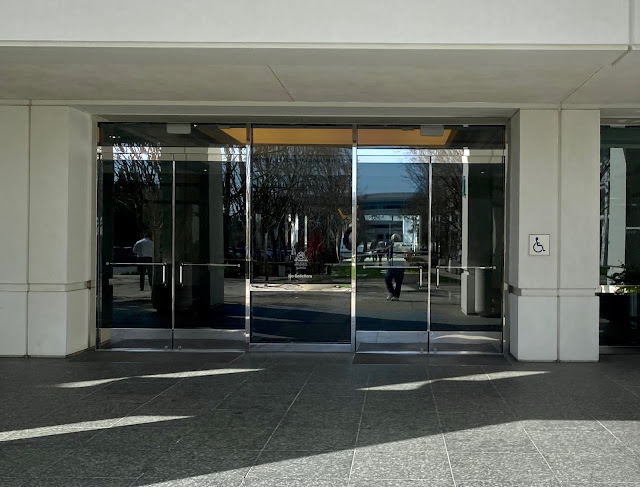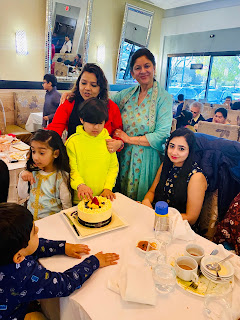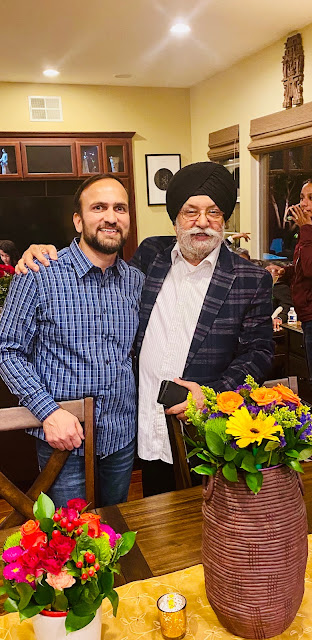Guru Shri Harkrishan, the bold and kind Guru as researched by Shiv below is more relevant in the times of Pandemics creating a heavoc globally.
Shiv has been too busy in his business recently started. His mom Harvinder has been pushing him to come with a video to highlight ensuing Martyrdom of 8tg Guru Sri Harkrishan ji. This weekend, he has come out with a fantastic peice of a Video which has gone viral.
https://shabadkirtan.blogspot.com/2020/03/shri-harkrishan.html
This is an ongoing attempt to heal through music ... Music and Oneness abounds despite the Covid-19 pandemic. While I am busy during the week starting a new venture, I am spending some time recording some simple tracks while we are quarantined in California. This album will be my humble attempt to make love proximate, even as we are all physically distant due to the concerns of spreading of the virus. I believe this album will provide strength, peace and joy at a time when grief, fear and uncertainty has gripped the world. The making of the album will be public and I encourage musicians, singers, and novices to contribute if they want to this project ... or just listen, play and/or sing along for fun!
I might not make videos for each track for this album but you can find the audio here: https://soundcloud.com/shivshivshiv/sets/love-in-the-age-of-social
Shri Harkrishan
This shabad is about Guru Harkrishan, the eighth Guru. The lyrics were written mostly by Guru Gobind Singh:
Pritham Bhagauti Simar Kai Gur Nanak Layi Dhiyaye
Phir Angad Gur Te Amardas Raamdaas-ai Hoyi Sahaye
Arjan Hargobind Nu Simro Shri Har Rai
Shri Harkrishan Dhiyayiyeh Jis Dithai Sab Dukh Jaye
Tegh Bahadur Simariyeh Ghar Nau Nidh Avai Dhaye
Sab Thaayi Hoye Sahaye
Shri Harkrishan Dhiyayiyeh Jis Dithai Sab Dukh Jaye
I remember Shri Harkrishan envisioning whom all pain vanishes
Interesting that Guru Gobind uses the "Shri" suffix, which is used to respect the elders, the gurus and the avatars of God, as in Shri Raam and Shri Krishna. It is clear how respected Guru Harkrishan was a short time after his departure.
When Guru Har Rai, the 7th Guru in the lineage of Guru Nanak, passed away on 20 October 1661, he chose Shri Harkrishan, the younger of his two sons to be the next Guru. At this time Shri Harkrishan was merely 5 years old. While he was young in years, he was mature in wisdom. Bhai Santokh Singh writes, "The early morning sun looks small in size, but its light is everywhere. So was Guru Harkrishan' s fame, without limit."
Shri Harkrishan was very popular in northwest India -- so much so that the Mughal Emperor Aurangzeb wanted to meet him. Aurangzeb was notorious and would have not been able to access to Shri Harkrishan were it not for Mirza Raja Jai Singh, a Rajput king from Amer, Rajasthan who held the followers of Guru Nanak in very high esteem. He convinced Shri Harkrishan to visit Aurangzeb in Delhi and he was invited to live as a guest in the bungalow in 1663.
During Shri Harkrishan's visit there was an ongoing epidemic of cholera and smallpox and seven year old Shri Harkrishan boldly decided to serve the community. While the rulers of his time were hiding in palaces, Guru Harkrishan went from community to community, house to house, and connected with them. He used his resources to help the community with aid and highly sought clean water from the well at Raja Jai Singh's bungalow. The Hindus called him "Bal Guru" and the muslims called him "Bala Peer" ... the child guru. He served the community of Delhi no matter what their religion or social status was. It is said that anyone he met was overwhelmed with reverence, and a calming sense of peace. It became well known that whoever met Shri Harkrishan was relieved of suffering. He served the community until he himself succumbed to small pox infection.
Where he was cremated now stands Gurudwara Bala Sahib; I have a fond memory of walking to Bala Sahib with my grandfather when I was very young. In place of Raja Jai Singh's bungalow where Shri Harkrishan lived now stands the Gurudwara Bangla Sahib, one of the most prominent Sikh house of worship. It was first built as a small shrine by Sikh General Sardar Baghel Singh in 1783 during the reign of Mughal Emperor, Shah Alam II.
Millions of people visit Bangla Sahib every year and thousands get free food every day. The water from the well of the well is considered holy. The bed where he used to sleep is found within the premises of the Gurdwara. When I recently visited Delhi, I drank some water from the well and had langar sitting next to a local laborer who told me that he often eats here. Even when most of Delhi is closed during the COVID-19 pandemic, the homeless are being fed outside Bangla Sahib.
Guru Harkrishan's boldness and his kindness at such a young age remains exemplary in the history of humankind. He lost his life early, but he won the hearts of people forever, gained the respect of generations to come, and continues to inspire us with his courage and generosity. It is no surprise that his legacy lives on.



























































